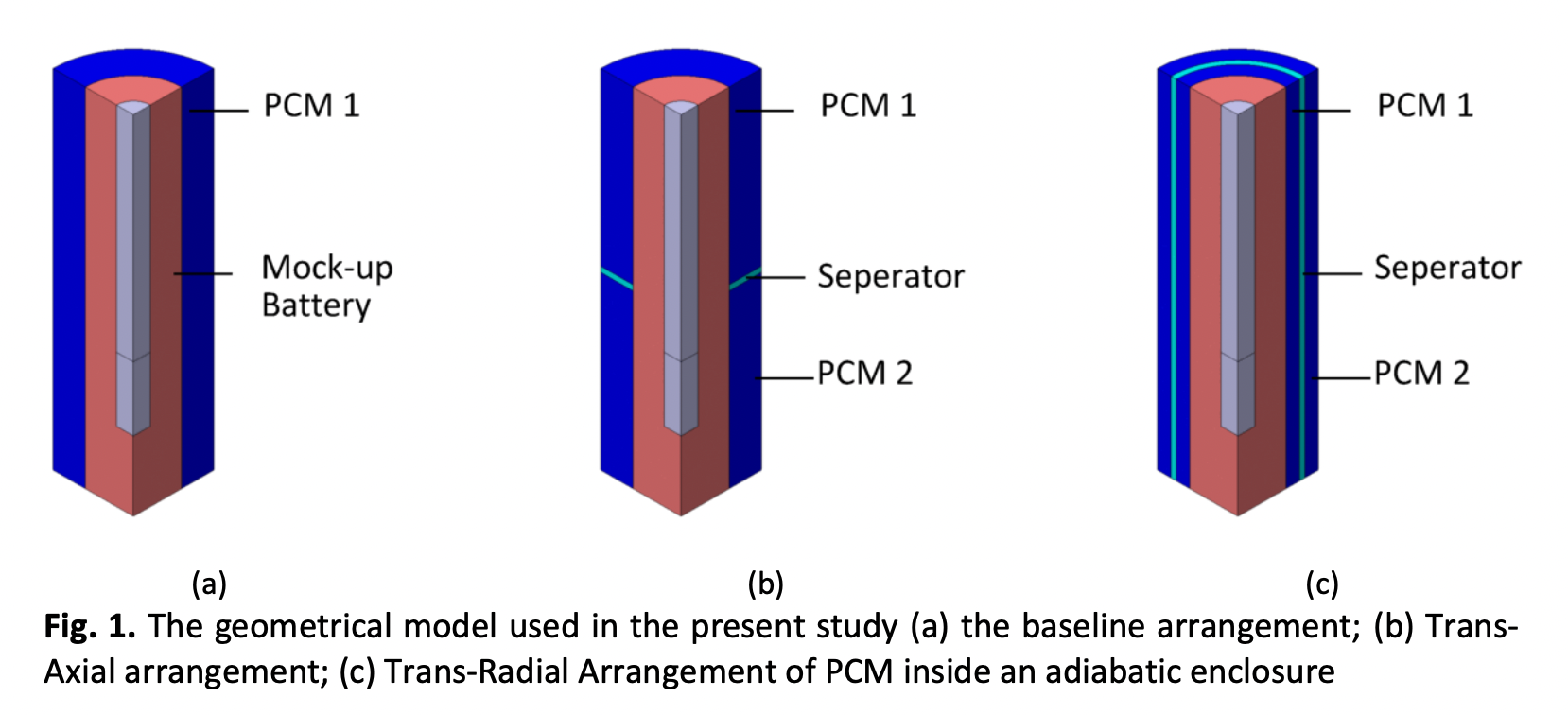Effects of Different Phase Change Material Arrangement on Thermal Management for Lithium-Ion Batteries
DOI:
https://doi.org/10.37934/arfmts.104.2.5164Keywords:
Phase change material, lithium-ion batteries, liquid fraction, CFD, trans-radial arrangementAbstract
The high energy density, low self-discharge, and operating voltages of lithium-ion batteries make them the preferred choice for electric cars. It is crucial to keep the battery pack at operational temperatures in order to avoid thermal runaways because these high energies are being stored in a small area. In this research, a novel passive battery cooling method is presented that makes use of two different phase change materials (PCM) arranged in various ways inside a battery pack. In this study, RT50 and RT60 PCMs are utilized to evaluate the combined thermal performance to that of a single PCM. A variety of configurations for the phase change material are used between battery pack cells, including trans-axial, trans-radial arrangements and compared against the performance of individual PCM. The effectiveness of passive cooling is evaluated in the current study for a variety of layouts that are exposed to external convection circumstances at a constant ambient temperature of 25°C. The transient behaviour of the battery cell temperature and its effects on PCM architecture at various melting stages are investigated in the current work. The heat transmission characteristics and melting phenomenon to suggested phase change materials arrangements is assessed.
Downloads

































